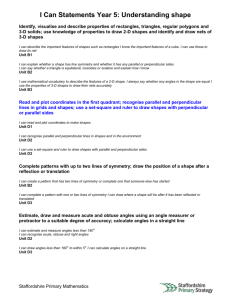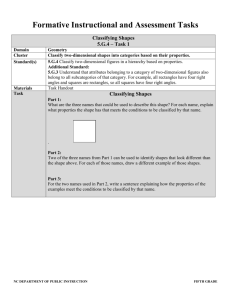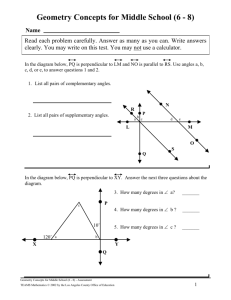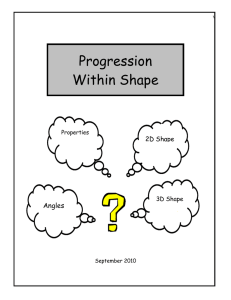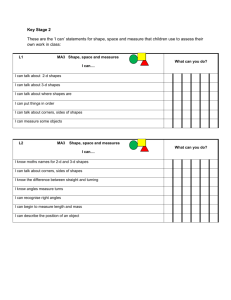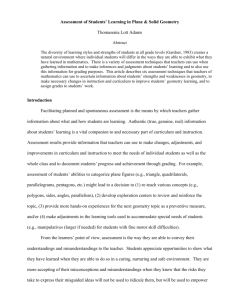Unit 2
advertisement
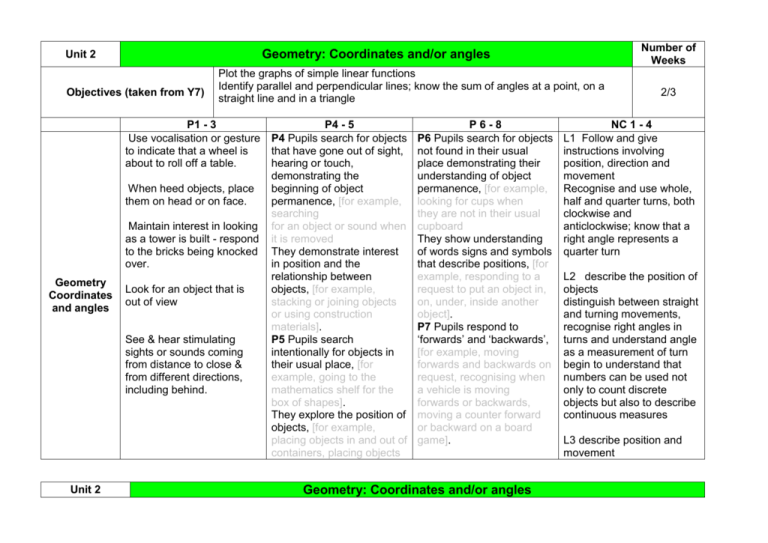
Objectives (taken from Y7) Plot the graphs of simple linear functions Identify parallel and perpendicular lines; know the sum of angles at a point, on a straight line and in a triangle P1 - 3 Use vocalisation or gesture to indicate that a wheel is about to roll off a table. When heed objects, place them on head or on face. Maintain interest in looking as a tower is built - respond to the bricks being knocked over. Geometry Coordinates and angles Look for an object that is out of view See & hear stimulating sights or sounds coming from distance to close & from different directions, including behind. Unit 2 Number of Weeks Geometry: Coordinates and/or angles Unit 2 P4 - 5 P4 Pupils search for objects that have gone out of sight, hearing or touch, demonstrating the beginning of object permanence, [for example, searching for an object or sound when it is removed They demonstrate interest in position and the relationship between objects, [for example, stacking or joining objects or using construction materials]. P5 Pupils search intentionally for objects in their usual place, [for example, going to the mathematics shelf for the box of shapes]. They explore the position of objects, [for example, placing objects in and out of containers, placing objects P6-8 P6 Pupils search for objects not found in their usual place demonstrating their understanding of object permanence, [for example, looking for cups when they are not in their usual cupboard They show understanding of words signs and symbols that describe positions, [for example, responding to a request to put an object in, on, under, inside another object]. P7 Pupils respond to ‘forwards’ and ‘backwards’, [for example, moving forwards and backwards on request, recognising when a vehicle is moving forwards or backwards, moving a counter forward or backward on a board game]. Geometry: Coordinates and/or angles 2/3 NC 1 - 4 L1 Follow and give instructions involving position, direction and movement Recognise and use whole, half and quarter turns, both clockwise and anticlockwise; know that a right angle represents a quarter turn L2 describe the position of objects distinguish between straight and turning movements, recognise right angles in turns and understand angle as a measurement of turn begin to understand that numbers can be used not only to count discrete objects but also to describe continuous measures L3 describe position and movement inside and outside a hoop, fits as many objects as possible into a box]. recognise shapes in different orientations and reflect shapes, presented on a grid, in a vertical or horizontal mirror line L4 make 3-D models by linking given faces or edges and draw common 2-D shapes in different orientations on grids reflect simple shapes in a mirror line, translate shapes horizontally or vertically and begin to rotate a simple shape or object about its centre or a vertex choose and use appropriate units and instruments interpret, with appropriate accuracy, numbers on a range of measuring instruments Applied Learning and Thinking Skills Mathematical Processes and Applications Unit 2 Geometry: Coordinates and/or angles
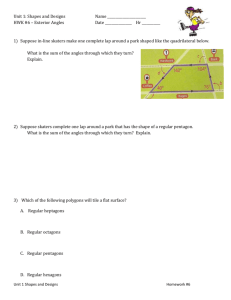
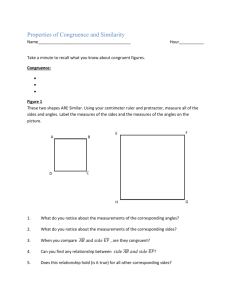
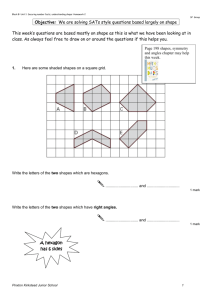
![Property`s Of 2D and 3D Shapes.! :] - Odessa R-VII](http://s2.studylib.net/store/data/005712562_2-5f3fcc92381e7510fd57ce4e0ef497c8-300x300.png)
